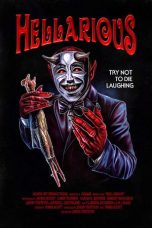- Source: The Best Ten
The Best Ten (ザ・ベストテン, Za Besuto Ten), was a Japanese music chart television program broadcast on TBS Television from 1978 to 1989. The weekly shows were broadcast live on Thursdays. During its broadcast history, the air time and day changed only once. Each episode had one male and one female presenter. From 1978 to 1989, there were a total of four male presenters. The female presenter was always Tetsuko Kuroyanagi. The program is also colloquially known as Best Ten (ベストテン, Besuto Ten).
During its broadcast time since 1978, numerous other music television programs, including Fuji TV's music program Yoru no Hit Studio (夜のヒットスタジオ, Yoru no Hitto Sutajio), which was first broadcast ten years earlier in 1968, were already popular and well known all over Japan. The popularity and audience rating increased very quickly and reached 41.9%.
When Oricon Style published the results of the national survey of "Music programs that I would like to see revived" in May 2010, The Best Ten achieved first place. When news website Shunkan Josei Prime published the same survey in November 2023, The Best Ten was again in first place, regaining the same place as in the 2010 survey charts. The surveyors answered the reason behind revival for "excitement of the weekly new charts, its original ranking system, entertaining presenters and memorable outdoor performances".
The program has been re-broadcast on the cable television channel TBS Channel 2 in 2020 and 2022. The order of broadcasting was chosen based on the high view ranting and popularity. According to the article published on news website Sponichi in 2020, one of the reasons for the re-broadcast decision was for the younger generation having interest in kayōkyoku music, referring to the Japanese phenomenon "Kayōkyoku Boom" (歌謡ブーム). Partial reason was the Kayōkyoku special episode of Matsuko no Shiranai Sekai hosted by Matsuko Deluxe, which broadcast on the same year.
"The Best Ten Theme" was performed during the 62nd Japan Record Awards to commerate and show respect for the original composer of the song, Katsuhisa Hattori, who died earlier that year.
History
The Best Ten was a weekly 54 minutes (in later years 55 minutes) music program. The music chart program was successor of the previous music program TBS Kayokyoku Best Ten (TBS歌謡曲ベストテン, TBS Kayōkyoku Besuto Ten), which broadcast in years 1965-1967 and in general music program TBS Uta no Grandprix (TBS歌のグランプリ, TBS Uta no Guranpuri). Many Japanese musical acts made their television performance debut on The Best Ten, but the show has also hosted many artists from all around the world. In the span of 11 years, over 630 episodes were broadcast and more than 400 artists performed.
The show was always notable for the ranking boards clattering away before the announcement by presenter, as they went up to show The Best Ten's top 10 singles of the week. In the case if the artist could not appear, they would jump immediately to announce the next chart position. For the rankings from 11 to 20, they were given 5 seconds screen time for video-sound introduction with the chart performance for the last 4 weeks. In the case if it was the first week, only the one position would be displayed. In 2016, in magazine "Pen", the producer and the director of the program Shuji Yamada revealed, that board construction and idea comes from airport's tables of departures and arrival.
The guests always came through the shiny wall panel, to greet with presenters and have a one-two minute short interview about song or recent events before the stage performance. Every week for the every artist, the staff would elaborate stages set just to enhance the song's atmosphere and performance. Inspired by the Yoru no Hit studio, for the solo artist, they were always accompanied by TBS television's orchestral band, who played on live, prior up until 1985, when the necessarity of the live band to perform for the artist has been reduced and as result replaced by karaoke background sound. Aside of the studio indoor performances, there were on-location, outdoor performances as well in the various places, such as an entrance of temple or inside train. Unlike the Yoru no Hit Studio, which allowed artist to perform in full chorus, in the Best Ten it was always one and half chorus. Sometimes before the start of artist's performance, the presenters read very quickly one of them randomly chosen postcard letter within the time span during intro. After the end of performance, they would sit on the large sofa. At the end of the broadcast and during the ending role credits staff roles, each time a memorial group photo has been taken from the large sofa from the up upon the whole scale.
In the case if the artist couldn't made it on time, had on the same day concert, shooting or filming, or didn't want to appear on the television, the presenters were hosting phone call interview and some year later interview through long-distance camera interview.
Since 1985, the viewer rantings has been slowly declining. The factors includes leave of the first male presenter, Hiroshi Kurume along with the list of artist who made it through ranking chart, however declined to appear on the television and replacing live orchestra sound with the karaoke sound.
In July 1989, the cancelation of the program has been announced during the broadcast. As for the cancelation reason, Kuroyanagi expressed "difficulty to have 10 artist performance within the short amount of broadcast time and blaming the lengthened performance time from the half-chorus to full"; claiming later that one of presenters priorities "was to always give small interview with the artist".
By the end of The Best Ten, it has been replaced by music news program Ongaku Ha Together (音楽派Together), which aired on the same day and time as The Best Ten and shared same female presenter, Kuroyanagi.
Ranking system
The Best Best includes its own music ranking chart, which was equally recognized to the music industry and music association.
The point system has been based on the four important factors:
record sales (using rankings from three companies: Oricon, Music Lab, and Music Research)
cable broadcast requests (using data from the national cable music broadcasting association)
radio broadcast request charts (using the rankings of 25 radio stations for this program)
postcard requests by the fans
The scoring point ratio at the start of the program were: "30 points for record", "10 points for cable", "20 points for radio" and "40 points for postcard". During the time, the postcards had the highest points. However, in February 1979, TBS announced that the scoring ratio would be changed from 20 points to 30 points for radio and from 40 to 30 points for postcards (record points and cable points remained unchanged). The reason for the change was, that "many postcards with clearly the same handwriting but different names were found, borrowed other people's names without permission.
The scoring ratio was subsequently revised, and from 1981 it became: "45 points for records", "10 points for cable", "21 points for radio" and "23 points for postcard", and from 1986 until the end, it became "60 points for records", "10 points for cable", "10 points for radio" and "20 points for postcards".
By the end of a year, special The Best Ten Top 10 Yearly Charts (各年の年間ベストテン) has been published and by the order from 10 to 1. The artists, who've charted performed on the year's final broadcast.
Presenters
The Best Teen has been hosted during its entire history of broadcast in total by 4 male presenters and 1 female presenters, marking Tetsuko Kuroyanagi the longest among the all presents in span of 11 years. In October 2023, the first presenter Kume has published his books about his 17 years of experience and emotions during hosting the program.
Revival Specials
Since the end of program in 1989, between years 1991 and 2019 various special programs were broadcast. These can range from the regular broadcast time from 2 to 3 hours in length. There were also be various specials with no actual artists performances, these were often be the current hosts discussing the history of the shows and playing some of the more notable performances from archived videotape recorder (known in Japanese as VTR).
"Omoide no Best Ten" - 1 April 1991 – 8 March 1992
"Konya Dake! Gohonka Fukkatsu The Best Ten Special" - 3 October 1991
"The Best Ten 1991 Nenmatsu Special" - 28 December 1991
"The Best Ten Dousoukai" - 26 December 1993
"The Best Ten Dousoukai II" - 29 March 1994
"The Best Ten Fukkatsu Ban" - 4 April 1995
"The Best Ten Konya Dake no Goukaban '97" - 28 December 1997
"The Best Ten Fukkouban Special" - 2000-2004
annual broadcast, which always aired on 31 December
"Fukkatsu! The Best Ten" - 12 July 2019
Releases
Prior from the 2009 until present, a numerous of special CDs, DVD-box sets were released by the high demand of the artist fans.
The discs include full footage of the performances, however in some occasions before-performance talks were completely cut off and not showed at all.
= Albums
=Compilation albums
= DVD set-boxes
=Other DVD set-boxes
= Home video DVD
=Other home video DVD
Publications
= Books
== Magazine feat.
=See also
Yoru no Hit Studio
References
External links
The Best Ten on TBS Official Website (in Japanese)
Kata Kunci Pencarian:
- Ervinna
- Seiko Matsuda
- Candy Candy (lagu)
- Valentine Kiss
- Daniel Caesar
- Padi (grup musik)
- Cristiano Ronaldo
- Siska Khairunnisa
- Gravity (film)
- National Board of Review
- The Best Ten
- The Ten Commandments (1956 film)
- Ten of the Best
- Car and Driver 10Best
- The Power Station (band)
- Asahi Pro Best Ten
- Big Ten Conference
- Scouting for Girls discography
- Ten Commandments
- Bambi
- 1
- 2
How to Train Your Dragon: Homecoming (2019)
Madagascar (2005)
I Am Lisa (2020)
The Last Rifleman (2023)
No More Posts Available.
No more pages to load.














